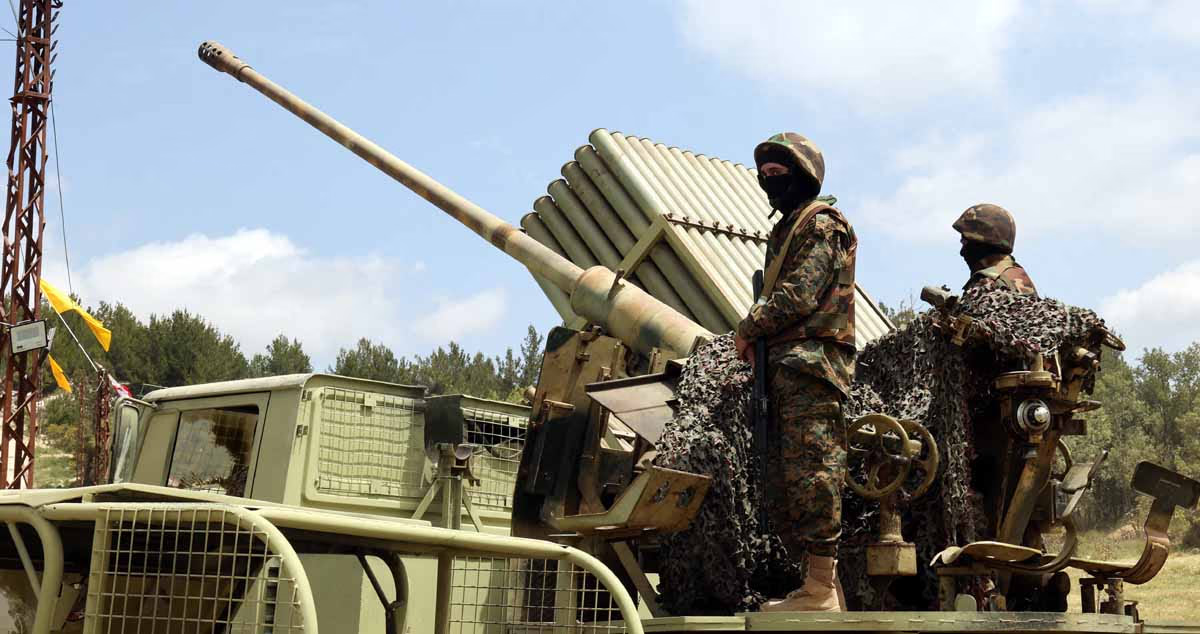Following the bomb blasts from pagers and walkie-talkies, Hezbollah faced a massive setback, instilling fear in their fighters. In response, Hezbollah leader Hassan Nasrallah threatened Israel with severe consequences. Hezbollah was poised to launch over a thousand rocket launchers from southern Lebanon. However, before they could act, Israel's deadly response began through aerial strikes.
Direct confrontations between Lebanon and Israel are a daily occurrence. Nonetheless, within the span of an 11-month conflict, Israel's latest airstrike marked its most virulent attack. Targeting over 70 locations in one go, fighter jets unleashed missiles and bombs from the air. Nasrallah stated that Israel had shown a perilous and agonizing day, breaking all norms of warfare. He warned it was now Israel's turn.
Read more:

Source: aajtak
Nasrallah had warned he wouldn't specify the time, method, or location of attacks, but assured Israel would pay dearly. Despite these threats, Hezbollah's fighters remain resolute in their mission. Israel left no stone unturned in response, sending fighter jets to rain down fire upon Lebanese territory.
What would happen if these two nations engage in a direct war?
Israel and Lebanon share a 130-kilometer-long border, referred to as the Blue Line, separating Israel's northern and Lebanon's southern lands. In the Global Firepower ranking of 145 countries, Lebanon stands incomparable to Israel. Israel ranks 18th while Lebanon holds the 111th position.
Read more: Remote detonation, booby-traps, timer activation... how were hundreds of walkie-talkies blasted in Lebanon?

Source: aajtak
Comparing the military strength of both nations...
Lebanon has only 80,000 active military personnel in contrast to Israel's 173,000, more than double. Israel also boasts a reserve force of 465,000, which Lebanon lacks. Israel's paramilitary force comprises 8,000 soldiers, whereas Lebanon has a force of just 25,000.
Israel has 153 fighter jets, Lebanon has 9
Israel's air fleet includes 601 aircraft, far exceeding Lebanon's 78. While Israel operates 241 fighter aircraft, Lebanon has none. Furthermore, Israel possesses 32 dedicated attack aircraft in contrast to Lebanon's 9. When it comes to transport aircraft, Israel has 86, Lebanon none.
Read more: Africa in drought! Parched land, animals, and humans... See photos

Source: aajtak
In training aircraft, Israel operates 153, Lebanon merely 9. For special missions, Israel has 23 aircraft, whereas Lebanon has none. Lebanon's helicopter fleet stands at 60, whereas Israel's is double with 126, including 48 attack helicopters - a category Lebanon lacks.
Lebanon leads in towed artillery, lags behind in rocket strength
In terms of tanks, Lebanon has 361 compared to Israel's 2200, more than sevenfold. Lebanon has 9864 armored vehicles while Israel commands a staggering 56290. In self-propelled artillery, Israel surpasses Lebanon with 650 units against Lebanon’s 84.
Read more:

Source: aajtak
Lebanon leads in towed artillery with 374 units, 74 more than Israel. However, in mobile rocket projectiles, Israel again takes the lead with 300 to Lebanon's 30. In naval strength, Lebanon is ahead, boasting 86 warships versus Israel’s 67. Neither country has aircraft carriers.
Israel has 5 submarines, Lebanon has none
Israel's naval clout includes 5 submarines, while Lebanon has none. Both nations lack destroyers and frigates. Israel possesses 7 corvettes; Lebanon none. Additionally, Israel has 45 patrolling vessels to Lebanon’s 22.
Read more:

Source: aajtak
Israel has 48 airports compared to Lebanon's 8. Israel also has 5 ports; Lebanon just 2. Israel maintains 19,555 kilometers of roads, slightly less than Lebanon’s 21,705 kilometers. These roads and airports serve critical roles during emergencies and wartime.
Geographically, Lebanon is half the size of Israel. Israel spans 20,770 square kilometers, while Lebanon covers 10,400 square kilometers. Israel lacks rivers, but Lebanon boasts a 170-kilometer-long river.
Lebanon's active soldiers number less than half of Israel's
Israel has 3.111 million people fit for military recruitment, with 124,000 reaching the eligible age annually. In contrast, Lebanon has 1.753 million fit for military service, and 68,859 reach the recruitment age yearly.




